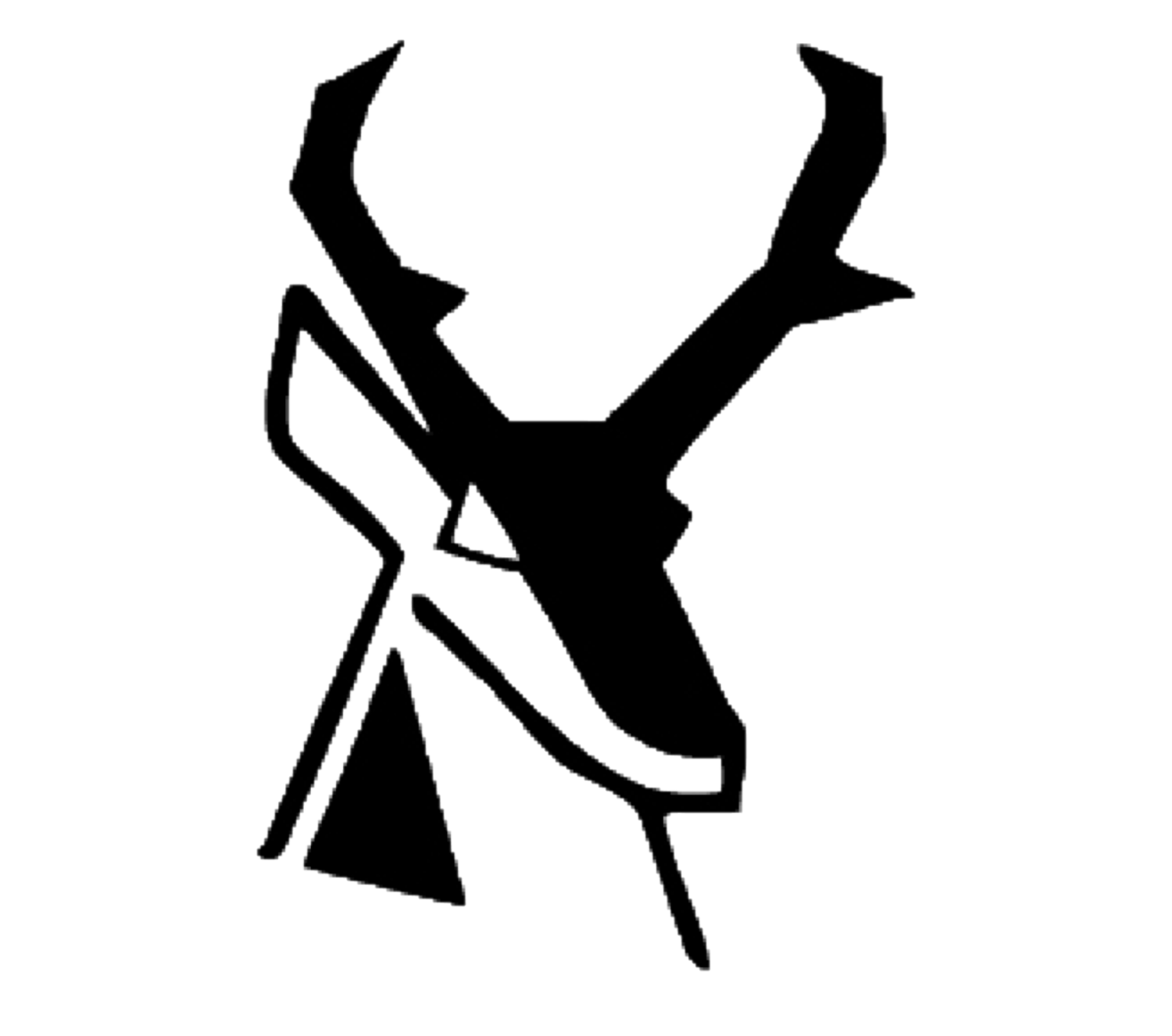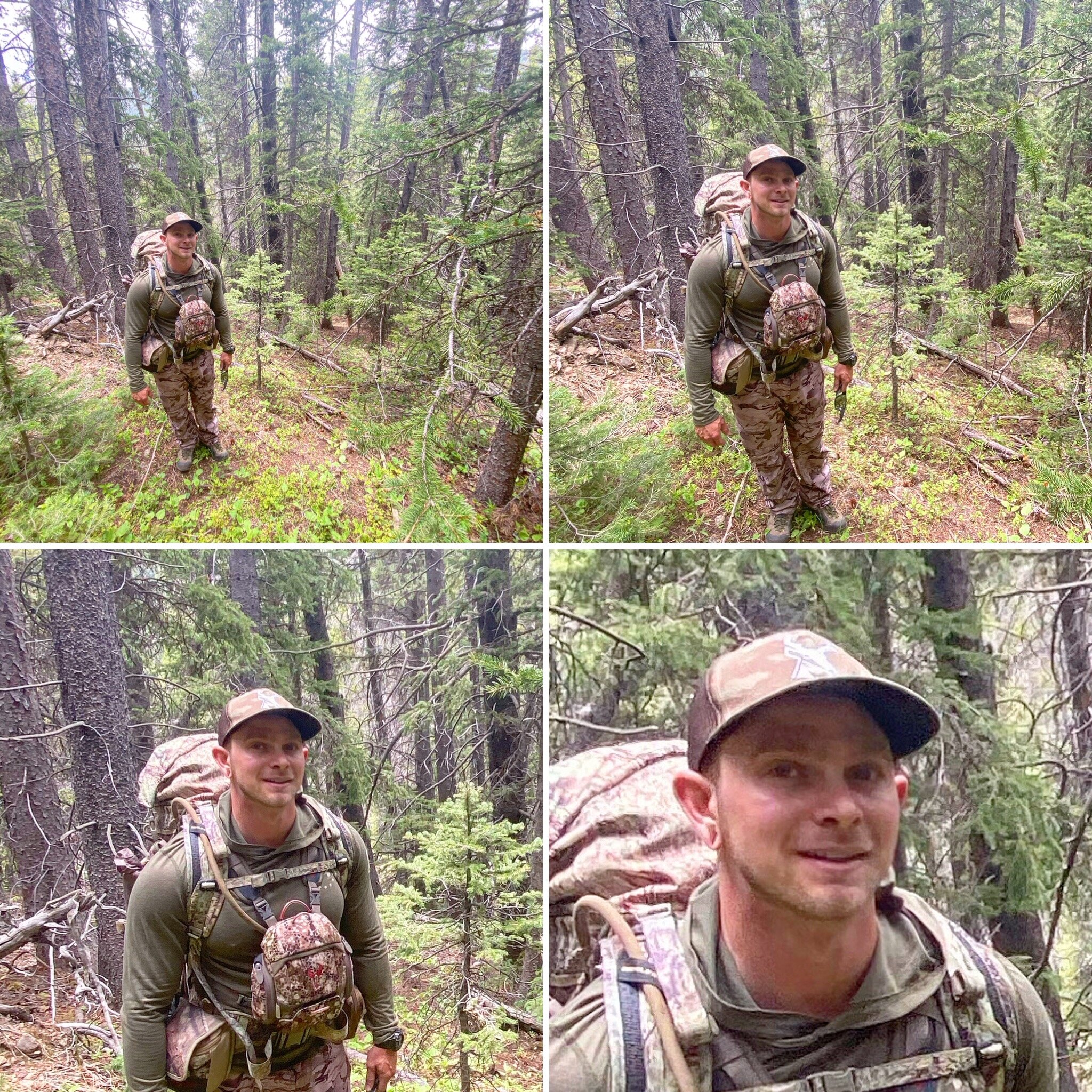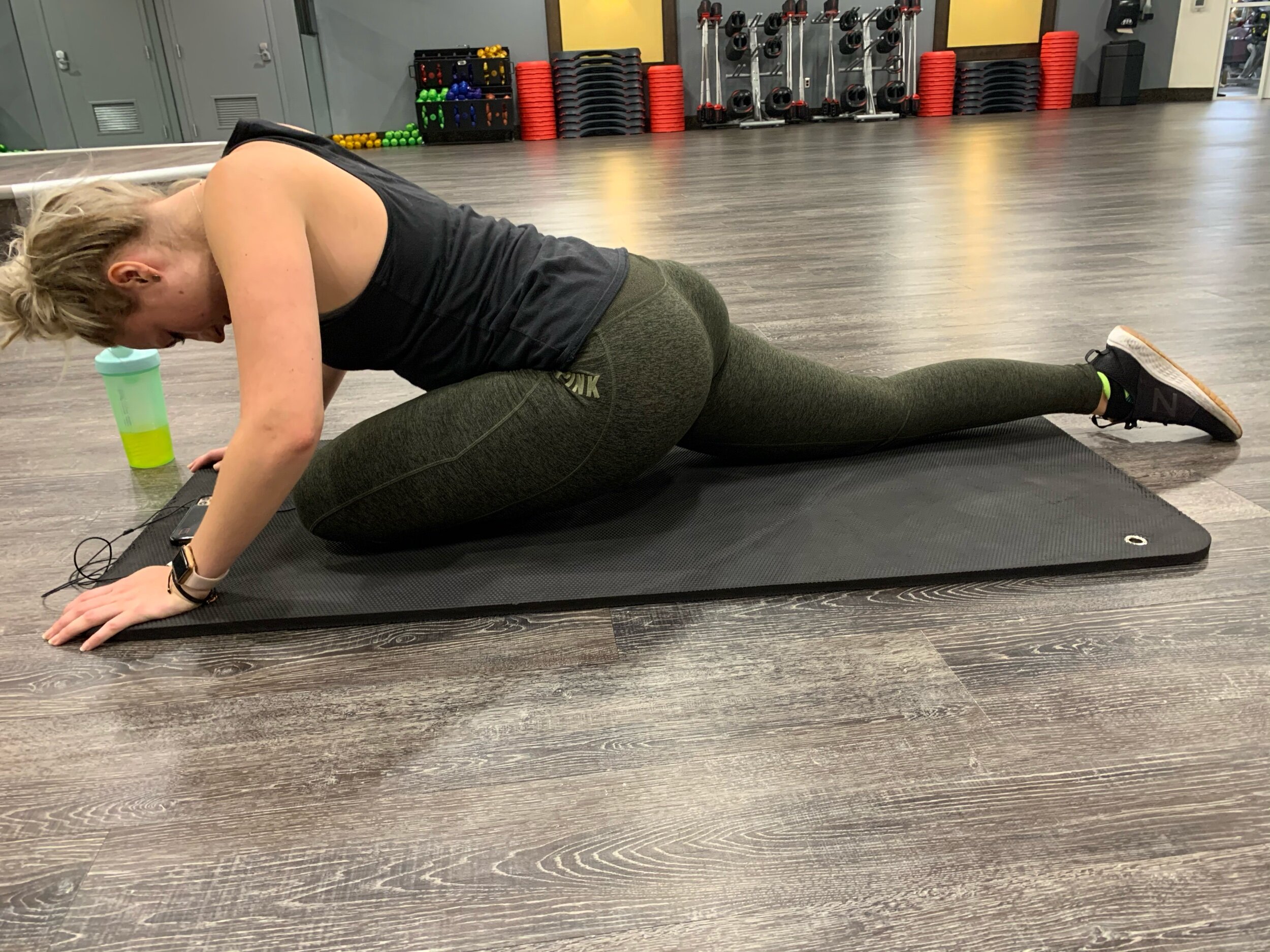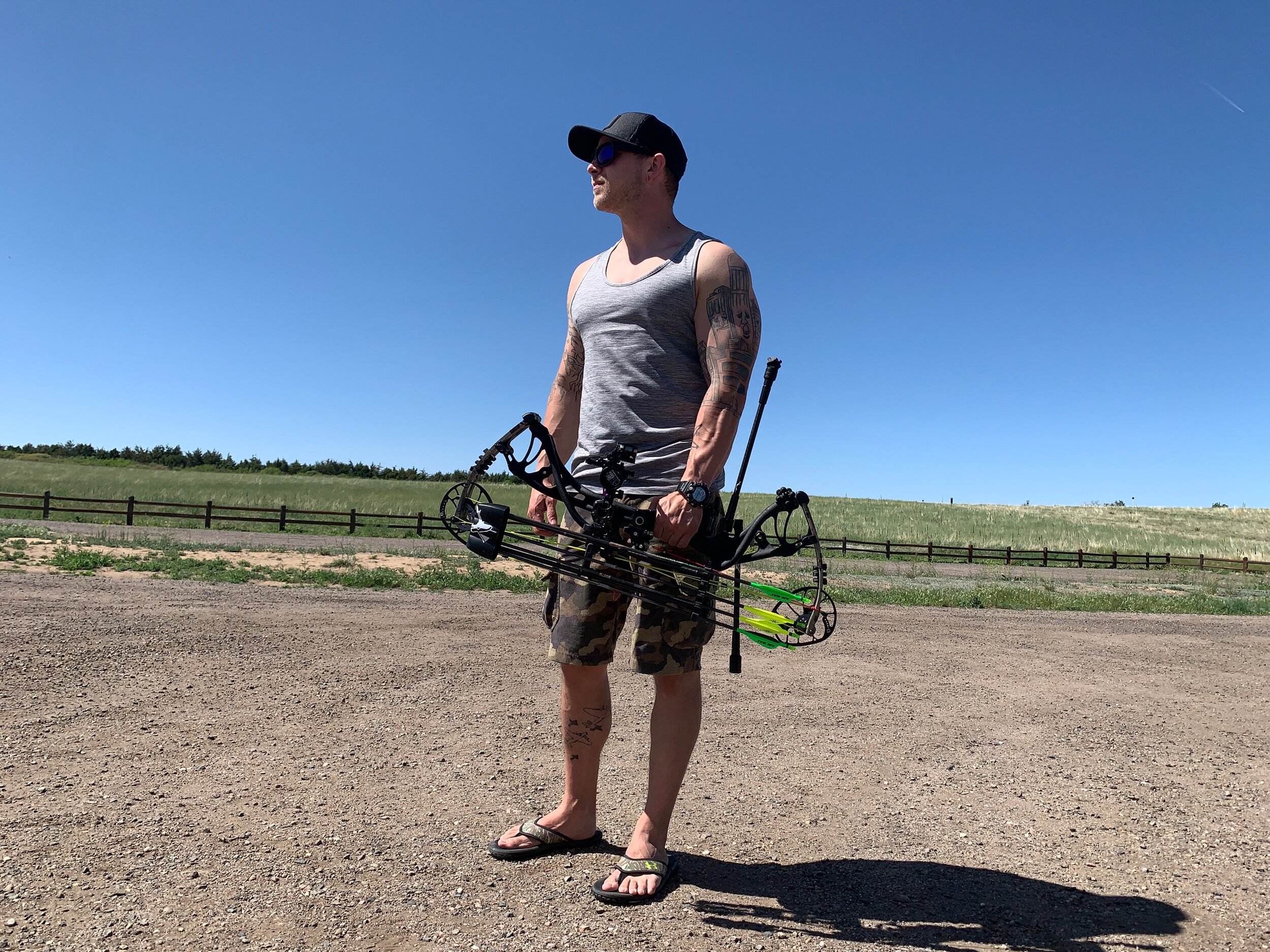For many hunters, September is the time when the rubber meets the road. A full year of waiting, wishing, and reflecting all come down
to this spectacular time that we as bowhunters get to turn our legs loose on the beautifully rugged landscapes of the west. The first ascent from the trailhead to the timberline is always breathtaking, either figuratively or literally. How you prepare leading up to hunting season can really mean the difference between an enjoyable adventure, or getting your butt kicked. In the following paragraphs, I’ll be covering some of the elements of my personal
fitness routine in preparation for my western archery hunts. There are many different perspectives on fitness and hunting, and my intention of this article is not to argue it’s necessity, but to simply outline my personal outlook. Think of it this way, if you want to win a Nascar race, you don’t need a racecar, but
it sure helps!
For the past sixteen years of my life I have been bowhunting out west, nine of those I have been a certified personal trainer. It was easy to connect the dots as to how being in better shape can equate to success afield. One specific example of when I wasn’t in good enough shape comes to mind. It was 2pm, my father and I were at camp shooting our bows when suddenly a bull elk started absolutely going off up on top of the hill, bugling nonstop for over ten minutes. We threw our camo on and split up. The bull was working the ridge from left to right, dad went left, I went right. The hillside was gradually steep and extremely thick with timber. As I gained elevation, hurdling down trees and sprinting through the openings in the timber, finally reaching the top, I was gassed! The bull had already crossed in front of me at what I guessed to be 45 yards. I had missed my chance because I had to stop in order to catch my breath. Lesson learned.
There are three key areas of fitness that tie into hunting success; cardiovascular endurance, muscular endurance, and flexibility/balance.
Each of which can be easily improved with consistent effort in the months leading up to opening day. When it comes to my personal program, I begin tailoring my gym efforts to hunting around late May. Throughout the year I typically train six to seven days a week with more of a focus on building muscle. I will
tell you right now, muscular strength has VERY LITTLE carry over into hunting. For that reason, come July, I cease all muscle building workouts to add in more time for the aforementioned “big three”. The following program will show exactly how I achieved my best hunting shape ever. If you decide to follow this program, be sure to consult your doctor first, as all exercise programs carry
some sort of risk depending on the individual.
June 1st, the warmth of summer has arrived,
signaling the time when cardiovascular workouts need to become a priority. On average, cardio improvements can be felt in about 21 days with consistent training. One
of my favorite starter cardio workouts is to simply run a mile at a comfortable pace (5.0-6.0mph) 2-3 times per week for two weeks. After the two weeks have passed, time to step it up. The next workout I typically utilize is one I call “3 in 30”. Three miles in 30 minutes, on the treadmill, that means a 6.0 speed
throughout. I will perform this 3-4 times per week for two weeks. At this point, we are into late June and should feel substantially better during these workouts than we did four weeks ago. Our foundation is now built, and we can
continue progressing.
Before moving forward with the program, I’d like to touch on the flexibility portion of the big three. Flexibility training is boring, painful, and just not enjoyable. However, when it comes to injury prevention, proper body mechanics, and overall physical efficiency, there is no substitute.
For those reasons, some sort of flexibility training should be performed DAILY! Prior to your cardio and muscular endurance workouts, spend five to ten minutes foam rolling. A foam roller is inexpensive, and there are tons of how-to videos out there. The main objective is to roll every muscle group you can as often as possible. Upon completing your workout, spend 10-15 minutes stretching the worked muscles slightly past the point of mild discomfort. Whatever you do, DON’T SKIP STRETCHING! With the increased demand you’ve recently placed on your body, the natural reaction is for it to increase tension on the newly recruited muscles, resulting in loss of mobility, higher risk of injury, and decreased efficiency. Stretching will keep you mobile, speed up recovery time, and reduce soreness.
Muscular endurance is the most fun of the big three to train. We all love hitting the weights in comparison to doing cardio or running. There
are two main muscle groups to focus on for improvements in hunting performance; lower body and core. Sadly, the “beach muscles”, such as arms, chest, shoulders, and back just don’t give us enough in return to spend our precious time on them in preparation for hunting season. But since I love muscle building, I’ll
typically add one day of upper body training per week, for my own selfish satisfaction. You might’ve caught it earlier, but this program is very lower body intensive, and for good reason! When it comes to hunting out west, our legs carry us everywhere, climbing steep hills, covering sometimes double-digit miles, and
hopefully carrying heavy packs! Now obviously we can’t train our legs every single day and expect them to improve or recover, so this is where our cardio, balance, and core training come in. A typical week of workouts will look like this:
- Monday: Lower body plyometric and athletic
training
- Tuesday: Core and balance training
- Wednesday: Cardio and flexibility
- Thursday: Lower body muscular endurance training
- Friday: Cardio and flexibility
- Saturday: Core and balance training
- Sunday: Cardio and flexibility
This is of course, the most advanced and difficult training setup, and for it to work, you need to be eating healthy, sleeping at least
seven hours, and stretching religiously. A good way to decrease the workload is to shorten the workouts and combine them into a few days per week, being sure to get your 3-4 days of cardio in. If you do choose to utilize this method, perform weight training before cardio.
Let’s take a look at what kind of exercises will be most beneficial to us. The easiest way to choose exercises to insert into our program is to simply think about the movements we perform while hunting! A few of my favorites for lower body are lunges, box step ups (both forward and
laterally), squats, and jumping movements such as box jumps. All of these exercises will simulate the activities we perform throughout the day on the mountain in some fashion. Try to keep the reps high (15-20) and the rest periods around 30-60 seconds. Core exercises are simple in most cases, planking, rotational movements, and crunching movements are all great. One
muscle group to not neglect is the lower back. These are huge muscles that stabilize our spine under load, so basically what we ask the most of while hunting! Hyperextensions and deadlifts with lower weight/higher reps are two excellent choices. Balance exercises can sometimes seem boring, but if you’ve ever been pinned down by a critter mid-stalk while one foot is in the air and the other is standing on a log, you’ll appreciate the importance. One of my favorites is to stand on a Bosu ball, with the flat side up, on one foot. The other foot will be moving around the ball, tapping the floor, in front of you, to the side, behind, and back across to the other side. Single leg hops are another great balance worker, simply hopping forward, backward, and laterally while standing on one foot.








